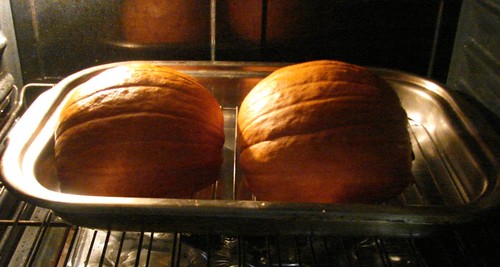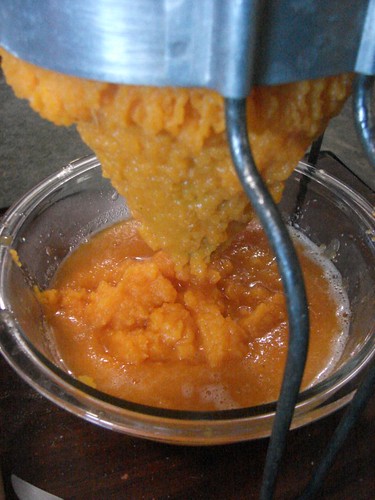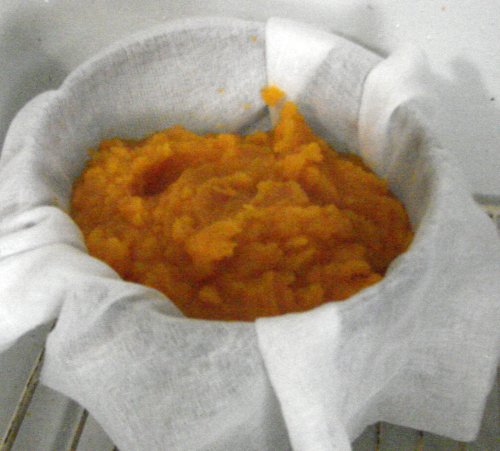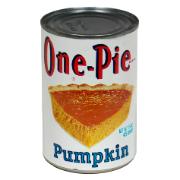Now that it's October, you can't drive down a road in New England without passing a roadside stand selling pumpkins. Even some people who don't run farm stand in the summer raise a field a pumpkins for sale in the fall, piling up the big gourds on their front lawns for sale to passers-by.
From a gardening perspective, pumpkins aren't a lot of work, but they do take up a fair amount of space to grow. I've never had much luck with them because my garden isn't big enough for the number of plants I'd need and the square footage they'd need to cover. So I buy them as needed, just like everyone else, on the side of the road from the local growers.
I'd venture to say that 90% of the pumpkins that folks buy are for seasonally decorative use. It's hard to find a neighborhood around here where there aren't pumpkins on the front steps or standing in a display with a couple of pots of mums. But if you're in the other 10% and want to actually eat the pumpkins you buy, here's how to do it.
Preheat the oven to 350 F.
Cut your pumpkin into manageable chunks. For eating, you'll probably want a smaller one because the pulp is sweeter and less stringy. I'm using a relatively small "sugar pumpkin" for the demo here, which I simply cut in half but if you're doing up a wicked huge one cut it into pieces that will fit in your roaster pans. Scoop out the seeds and stringy pulp and put the pumpkin into a roasting pan, skin side up if you can, and roast at 350 F for about an hour and a half. Don't bother to cover the pumpkin with foil or a lid on your roaster or anything like that. Pumpkins start out with way too much water locked up in them and if some of it wants to evaporate during cooking, it should be encouraged to do so.
 When you take the pumpkin out of the oven, the skins might be browned. That's OK. Inside, the pumpkin meat will be tender and orange. It tends to pull away from the skin as it cooks.
When you take the pumpkin out of the oven, the skins might be browned. That's OK. Inside, the pumpkin meat will be tender and orange. It tends to pull away from the skin as it cooks.Scoop out the tender pulp. You can simply mash it with a fork, but that makes a coarse and stringy pulp that isn't very pleasant when it's used. It's better to put the pulp into a strainer or a food mill and run it through to make it smoother. This is especially important for making pies. Seriously, pumpkin pie made with coarsely mashed pumpkin is really disgusting. I know this from personal experience because I skipped the "fine puree" step the very first time I made pumpkin pie starting with raw pumpkin. The pies smelled delicious, but looked and tasted lousy.
.
Notice how much water is coming through the sieve with the pumpkin. The amount of water left in the pulp will really surprise you because when you're scooping it from the baked skin, it will seem dry. Do not believe your lyin' eyes; as you puree the pumpkin it will be very wet
As a final step, line a strainer with a double layer of cheesecloth, add the pumpkin puree, and let it sit and drain overnight. Feel free to speed the process along by giving it a squeeze now and again.
All told, you are going to start with an average, soccerball-sized sugar pumpkin and finish with about four cups of pumpkin puree...after running your oven, cranking the food mill, and waiting for the stuff to drain.
This is one of those kitchen projects where the amount of work and time required is vastly disproportionate to the reward. It's just pumpkin, f'cryinoutloud, and the homemade shit's virtually identical to the canned pumpkin you get at the supermarket.
And that's why I almost never make my own pumpkin puree. I'll just go to the store and buy a can of One-Pie Pumpkin, just like I always have - and just like my mother and grandmother always did, too. Grown and canned in Maine, so I can get the convenience of ready-to-use pumpkin puree and still support local New England farms.






yay Maine. I grew some pumpkins this year- after two bad years they were actually starting to turn orange..and then a grey squirrel chewed big holes in them to get at the seeds. GRrrr.
ReplyDeleteTree
I bake my pumpkins in the oven. I freeze it in two-pie portions (freezer bags). When it defrosts, it's really easy to plop it into a strainer/collander and drain out the water.
ReplyDeleteAH, I love pumpkin....
ReplyDeleteI will try your recipe.